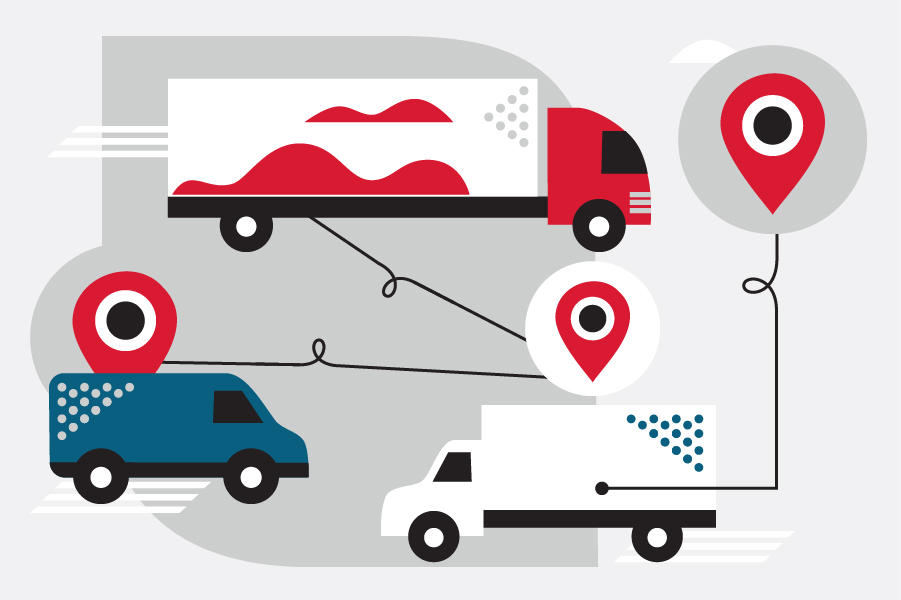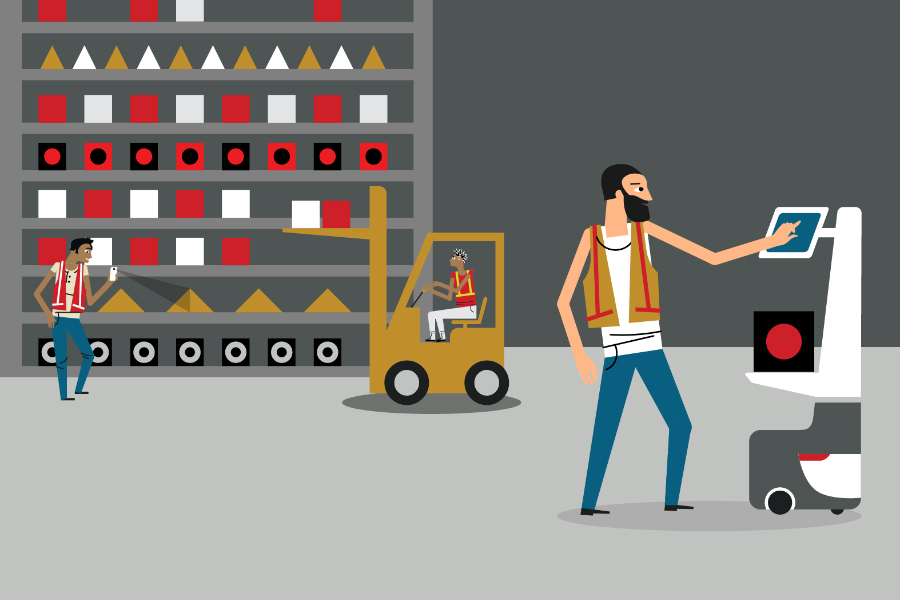COVID-19 has been disruptive to every sector, and the parcel industry is certainly no exception.
With major parcel carriers UPS, FedEx, DHL, and USPS still struggling under the weight of high demand, regional parcel carriers have become an attractive alternative. Major brands including Walmart, Ulta Beauty, and Kohl's have now embraced using regional carriers. Especially as national carriers have made moves to limit volumes from big-box retailers during the pandemic.
So, should your business look at adding regional parcel carriers to your parcel shipping strategy?
There's no doubt that regional parcel carriers offer businesses several benefits, from greater flexibility to lower shipping costs. However, they're not a silver bullet for solving every shipping-related challenge.
In this blog, we're going to cover:
- Why regional parcel carriers have grown in popularity
- How regional parcel carriers work
- The benefits/drawbacks of using regional parcel carriers
- When it makes sense to use regional parcel carriers
How COVID-19 disrupted the parcel sector
As in-store retail restrictions took hold in the second quarter of 2020, consumers migrated from brick and mortar to ecommerce in unprecedented numbers. Ecommerce sales grew by 32% to $792 billion - more than twice the rate of 2019 growth.
Over the past fifteen months, this wholesale shift to online shopping has led to a massive squeeze on carrier capacity. Parcel delivery volumes soared by 22% year-on-year to 126 billion by the end of 2020, a trend which is forecast to continue for the next five years. Under this sustained pressure, national carriers have taken some drastic measures to cool hot-red demand.
With networks hitting 2019 peak season levels by the middle of 2020, year-round surcharges have become the norm. FedEx has bought in a fresh round of surcharges on Express and Ground shipments starting June 21st, citing a 'new normal' to manage demand.
These additional costs have come fast on the heels of service guarantees being suspended. This has created a climate of dissatisfaction amongst businesses, and the desire to find more cost-effective delivery solutions.
With huge numbers of consumers continuing to work from home, the key to lowering last mile delivery times and costs is simple; to ship orders from locations closer to your customers.
Many nationwide retailers, including Macy's and Bed Bath & Beyond, have transitioned suburban locations into 'dark stores’ to redeploy frontline staff and cope with higher residential delivery volumes. Others are testing out longer-term decentralized fulfillment models. Target is currently trialing 'sortation' distribution centers, where dedicated facilities will divide orders into optimum delivery routes for carriers.
The solution: Regional carriers?
Overstretched networks and a pivot to more localized fulfillment methods have created a surge in demand for regional parcel carriers. According to Supply Chain Dive, regional parcel carriers were responsible for around 30% of shipments at 3PLs in October 2020, compared with just 4% in January.
This diversified carrier landscape has created new opportunities for retailers to optimize their shipping strategies. And with consumers now wanting ever-faster delivery services, parcel shippers need to use a variety of tools to meet these expectations.
How do regional parcel carriers operate?
Unlike nationwide carriers like FedEx or UPS, regional parcel carriers only offer coverage within specific areas. Some carriers are hyper-focused to major cities, such as RDS, which offers tracked same-day delivery services in New York City. Others will offer services statewide or within a multi-state area, like the Northeast or Midwest.
Because regional carriers only operate within a limited radius, they're able to offer faster and more affordable service levels through short-haul ground services. This minimizes the unproductive time that parcels spend waiting in depots or airports, resulting in much more efficient package delivery.
List of regional parcel carriers
If you're a merchant whose customer base is concentrated in a particular state or metro area, you've likely already taken advantage of regional parcel carriers. But if your customers are more geographically distributed, you may not have considered regional options. Here is a summary of regional carriers available in the U.S:
| Carrier |
Coverage |
Shipping Services |
| CDL Last Mile Solutions |
NY, NJ, CT, PA, DE, DC, MD, VA |
Same day delivery, next day and overnight delivery, white glove delivery services |
| GLS (formerly GSO) |
WA, OR, ID, NV, UT, CA, AZ, NM |
Next day and overnight delivery, early morning delivery, Saturday delivery |
| Lasership |
CT, DC, DE, FL, GA, IN, KY, MA, MD, MI, NC, NH, NY, NJ, OH, PA, RI, SC, VA, WV |
Same day delivery, Next day delivery, two day delivery, custom routing |
| Lone Star Overnight (LSO) |
Texas |
Early morning delivery, next day delivery, two-day delivery, Saturday delivery |
| PITT OHIO |
DC, DE, IN, KY, MD, MI, NJ, NY, OH, PA, VA, WV |
Less-Than-Truckload (LTL), TRUCKLOAD (TL), custom routing |
| Spee-Dee delivery service |
Illinois, Iowa, Minnesota, North Dakota, South Dakota, and Wisconsin, Michigan, Missouri, Nebraska |
Same day shipping, next day shipping, Return shipping |
| United Delivery Service (UDS) |
IL, IN, WI, Iowa |
Same day shipping, next day shipping, Saturday, and Sunday Delivery |
| US Cargo |
Ohio, Pennsylvania, West Virginia, East Michigan, KY, Indiana |
Same day delivery, Next day delivery, white glove services |
The benefits of using regional parcel carriers
Lower shipping costs and surcharges
Regional parcel carriers have lower operating costs and use less expensive transportation methods than their national counterparts. This means that shippers can access much lower carrier rates. Businesses stand to benefit from as much as a 40% reduction in costs, depending on delivery speed and the location of their customers.
Regional carriers are also less likely to add extra fees and accessorial charges, as rural or residential deliveries make up the bulk of their business. This being said, regional parcel carriers aren't immune from the pressures of the current market. Many have been forced to bring in peak season surcharges, albeit not as high as those of FedEx or UPS.
Excellent next-day delivery capabilities
It can feel as though Amazon and their fellow behemoths are the only ones who can achieve rapid delivery times. But by using regional shipping carriers, it's possible to achieve next day or even same day delivery capabilities. For example, if you have a large customer hub in California and partner with a provider like OnTrac to deliver these orders, your transit times will be much shorter.
Regional carriers also have much more knowledge of their local area than nationwide carriers. This means you're more likely to benefit from additional delivery options, such as later pick-up times to avoid rush hour traffic.
Greater flexibility
While major carriers pride themselves on their reliability and extensive coverage. However, the need to offer standardized services across their network means they can't always cater to more niche delivery needs. If you require more specialist services, such as product unpacking and set-up, you're unlikely to get much flexibility. Especially if your order volumes are smaller.
Because regional carriers don't have to manage the logistics of running a nationwide network, they're much better placed to provide value-added services. This is particularly useful if your shipping and delivery needs change over time, such as introducing a bespoke delivery service for your most loyal customers.
The drawbacks of using regional parcel carriers
Difficulty with integration
Because regional parcel carriers don't always use standardized protocols, it can be difficult for businesses to integrate with their systems to set routing rules, generate labels, or track deliveries in real-time. Unlike major carriers such as FedEx who maintains native integrations with popular ecommerce platforms, you may be required to put in a bit of legwork to achieve the same capabilities. This may not be feasible for smaller businesses that don't have extensive IT expertise in-house.
The added complexity of using multiple carriers
If your customer base is geographically distributed, you won't be able to rely on using just one regional carrier. While this may be more affordable than using national carriers, a patchwork of regional parcel carriers with varying shipping rates is complex and time-consuming to manage independently. Splitting your order volumes across carriers may also prevent you from qualifying for wholesale discounts, which create significant cost savings for your business.
When does it make sense to use a regional parcel carrier?
You'll be hard pushed to find a retailer that doesn't want lower costs and faster shipping times. However, regional parcel carriers aren't going to fit the needs of every business. Below we've outlined a few scenarios where partnering with a regional carrier may provide you with a more cost-effective shipping strategy:
When you have a multi-node fulfillment strategy
If you're using multiple fulfillment nodes to manage a widely dispersed customer base, regional parcel carriers provide you with several advantages. Local carriers can give you more rapid and affordable delivery to each customer hub, especially if they're able to align their pick-up schedules with your distribution strategy.
If you're not currently using a multi-node strategy but have a nationwide customer base, it's worth looking at your order history and customer data to determine whether certain areas could benefit from a regional distribution center. Learn more about the advantages of multi-node fulfillment.
When your volumes aren't big enough to qualify for a volume discount
If you're an emerging brand with smaller order volumes, you're unlikely to benefit from any wholesale discounts with major carriers. This gives your business a lot more flexibility. You have nothing to lose by partnering with multiple regional parcel carriers to get the best pricing.
But if you’re eligible for better rates with the likes of FedEx or UPS, you'll need to conduct some careful analysis to see whether regional carriers will give you better cost savings. As we mentioned above, coordinating between multiple carriers is a major task. So, you need to be certain that the pricing is worth the effort.
If you want white glove delivery options
During the pandemic, the moment of delivery has become one of the most important touchpoints in ecommerce. According to Forbes, 83% of consumers say that they pay as much attention to how brands treat them as to the products they sell. So to foster repeat purchasing behavior, you need to give customers an experience that makes them want to shop with you again.
In this climate, a delivery experience that surprises and delights customers is the key to securing brand loyalty. This is especially important for luxury and high-end retailers, where customers are more likely to expect value-added extras like white glove delivery or the freedom to choose their delivery slot. Partnering with regional parcel carriers will give you enhanced capabilities in this area.
Compare regional and national carrier rates with Ryder's SmartRate Selection tool
With consumers more accustomed than ever to free shipping and returns, it's never been more important for merchants to have access to cost-effective shipping rates. With 96% of consumers now considering ‘fast delivery’ to mean same-day delivery, retailers will need to start looking outside conventional shipping options if they're going to compete with the likes of Amazon.
By partnering with a nationwide 3PL like Ryder, you can eliminate the inefficiencies that come with using regional parcel carriers. Our proprietary SmartRate Selection software integrates directly with parcel carriers so you can compare shipping rates across both regional and national options in real-time. Mix and match carriers for the ultimate control over your shipping strategy, or allow us to analyze your order history and develop a plan that meets your customer's expectations.
Our team does all the heavy lifting (no pun intended) in maintaining carrier relationships to give you some of the most favorable shipping rates on the market. Partnering with us means you can stop worrying about shipping and focus on what matters most - growing your business.




